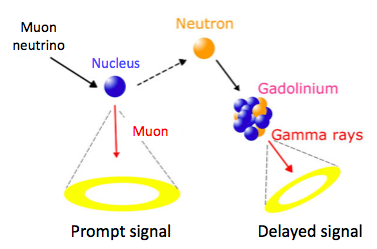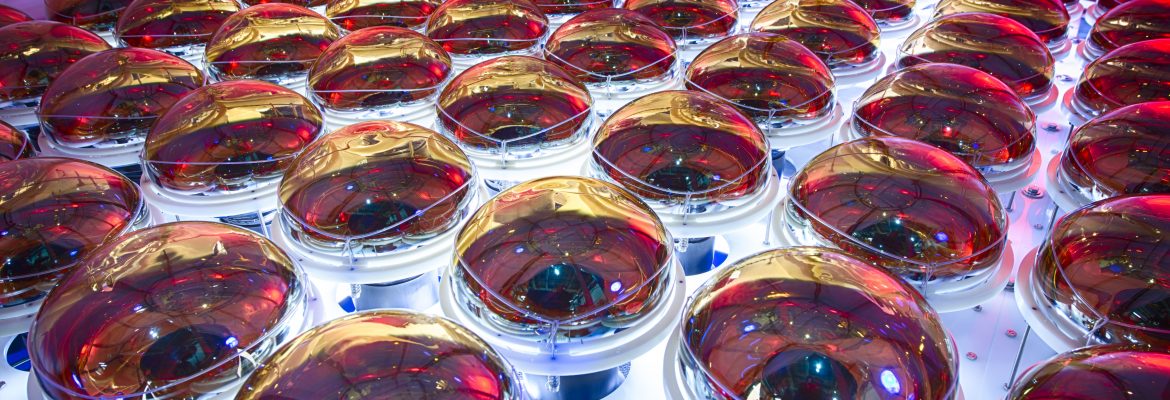Neutrinos are the most abundant of the known matter particles, and yet the ones we know the least about. We know that they have mass, and yet the absolute scale of their masses (at least 1,000,000 times smaller than the next lightest particle) is yet unmeasured. We know that neutrinos oscillate, morphing from one type to another as they propagate through time and space. But, the detailed patterns of this behavior are not yet fully measured.
If neutrinos treat matter and antimatter differently, they may be able to answer one of the most fundamental questions of cosmology: why matter and antimatter did not completely cancel out in the early Universe. Enough material survived to make the stars and planets and, ultimately, us. The mechanism of the matter-antimatter imbalance is yet unknown, although neutrinos are believed to hold the answer. If so-called charge-parity (CP) violation should be visible in the patterns of neutrino oscillation, it could be discoverable in the coming decades.
Unfortunately, experimental efforts to measure these neutrino properties are challenging. The low probability of neutrino interactions necessitates the construction of huge detectors the size of skyscrapers, buried deep underground to suppress background noise from cosmic rays and other radioactivity. Unknown details about how neutrinos scatter off of the messy nuclear structure of the target atoms make precision reconstruction of neutrino energy difficult.

Neutrino interaction in the fiducial volume, neutron capture by gadolinium salts and subsequent photon emission (delayed signal).
The ANNIE experiment on the Booster Neutrino Beam (BNB) at Fermilab is a 26-ton Gadolinium-doped (Gd) water Cherenkov detector, small by particle physics standards but with big ambitions. The goal of the effort is to develop a next-generation neutrino detector using advanced photosensors and new experimental techniques, all while making important progress in understanding how neutrinos interact with matter.
In particular, ANNIE is looking at how many neutrons get knocked out in neutrino-nucleus interactions. It turns out, the presence and abundance of these knock-out neutrons can shed a lot of light on the nature of the underlying interaction, addressing a major uncertainty on future experiments.
To meet these physics goals, ANNIE is blazing trails in two new areas of detector technology. ANNIE was the first full physics experiment to use large-area picosecond photodetectors (LAPPDs). LAPPDs are a newly advanced photosensor capable of measuring individual photons with time resolutions counting in tens of picoseconds (that’s tens of trillionths of a second) and with millimeter spatial resolutions. This fine-grained resolution will enable the experiment to better reconstruct high-energy tracks in the water-based on the pattern of light emitted in the water by the Cherenkov effect. ANNIE is loaded with gadolinium (Gd), a substance that makes the ANNIE detector sensitive to individual neutrons. ANNIE is also testing Water-based Liquid Scintillator (WbLS) in the SANDI vessel, which provides both Cherenkov and scintillation photons to reconstruct event position, energy, and direction.
ANNIE was one of two experiments awarded funding through the Intermediate Neutrino Program of the Department of Energy. Phase I of the experiment, a measurement of neutron backgrounds on the physics analysis, was approved by Fermilab in 2015. ANNIE completed Phase I in the summer of 2017 and successfully measured background neutron events (link for the results).
Phase II (physics phase) of the experiment was funded by the Department of Energy (DOE) in 2018 and the detector was constructed in ~8 months and installed in July 2019. Currently, the experiment is taking physics data to measure neutron yield from neutrino interactions and charged current (CC) inclusive cross-section in water. We have installed multiple LAPPDs and have done a test run with WbLS in the SANDI vessel in 2023.

